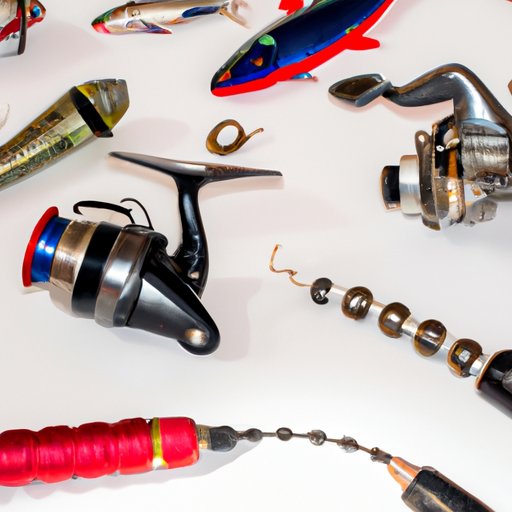Introduction
Fishing is an enjoyable activity that can be done alone or with friends and family. It’s also a great way to relax and get away from the hustle and bustle of everyday life. Whether you’re just starting out or an experienced angler, it’s important to understand the basics of fishing and the safety precautions you should take before you cast your line.
Overview of the Problem
If you’re new to fishing, it can be difficult to know where to start. There are many different types of rods and reels, lures, baits, and tackle to choose from. Knowing what equipment to buy and where to go can be overwhelming. Additionally, each state or province has its own rules and regulations for obtaining a fishing license. This article will provide an overview of the basics of fishing and the necessary steps to take to get started.
Purpose of the Article
This article will provide an introduction to the basics of fishing and offer tips on finding the right spot, getting the necessary equipment, and following safety guidelines. The goal is to help you feel more confident and prepared when you head out on your first fishing trip.
Research Basics
Before you hit the water, you’ll need to research the basics of fishing. This includes understanding the types of rods and reels, lures, baits, and tackle you’ll need.

Essential Items Needed for Fishing Trip
The most important item you’ll need is a fishing rod and reel. There are several different types of rods and reels, so it’s important to do your research and choose the one that’s best for you. You’ll also need lures, bait, and tackle. Lures are artificial baits used to attract fish, while bait is natural and can be live or dead. Tackle includes hooks, weights, and lines. Once you’ve chosen the right equipment, you’ll be ready to hit the water.

Types of Rods and Reels
There are many different types of rods and reels available, and each type is designed for a specific purpose. Spinning rods and reels are good for beginners because they are easy to use. Baitcasting rods and reels are better for experienced anglers and can be used for both freshwater and saltwater fishing. Fly-fishing rods and reels are designed for catching trout and other small fish in streams and rivers. Understanding the different types of rods and reels will make it easier to choose the right one for your fishing needs.
Lures, Bait, and Tackle
In addition to a rod and reel, you’ll need lures, bait, and tackle. For lures, it’s important to choose ones that are suited to the type of fish you’re targeting. Different types of bait such as worms, minnows, and crickets can be used to attract fish. Hooks, weights, and lines are considered tackle and are essential for any fishing trip. Once you’ve chosen the right lures, bait, and tackle, you’ll be ready to start fishing.
Find a Place to Fish
Once you’ve gathered all the necessary equipment, the next step is to find a place to fish. If you’re just starting out, it’s best to look for local fishing spots. These can include ponds, lakes, rivers, and streams. When choosing a location, it’s important to consider the type of fish you’re trying to catch and the type of water you’ll be fishing in. If you’re fishing in freshwater, you may want to choose a lake or pond. If you’re fishing in saltwater, you may want to choose a river or stream.
Get a License
Before you can start fishing, you’ll need to obtain a fishing license. Each state or province has its own requirements for obtaining a license, so it’s important to check with your local department of fish and wildlife for details. In some cases, you may need to take a short class or exam before you can get a license. Once you have a valid license, you’ll be ready to start fishing.
Practice Casting
When you’re ready to start fishing, it’s important to practice casting. This will help you get a feel for your rod and reel and give you an idea of how far you can cast. To practice, you can use an empty reel and cast into a large open area. Once you’ve mastered the basics of casting, you’ll be ready to start fishing.
Follow Safety Guidelines
It’s important to always follow safety guidelines when you’re fishing. This includes wearing a life vest if you’re fishing from a boat or dock. You should also be aware of the weather conditions and any potential hazards in the area. Paying attention to the weather and being aware of your surroundings will help ensure a safe and enjoyable fishing experience.
Conclusion
Fishing can be a fun and relaxing activity. Before you hit the water, it’s important to do your research and understand the basics of fishing. This includes gathering the necessary equipment, finding the right spot, obtaining a license, and practicing casting. Additionally, it’s important to follow safety guidelines such as wearing a life vest and being aware of the weather conditions. With the right knowledge and preparation, you’ll be ready to start enjoying the sport of fishing.


